By Paul Freary
The Glycerin GTS 22 and Beast GTS 24 from Brooks are two of the brand’s most popular and ever-present models in the brand’s range.
Known for offering both great cushioning and control, how do they differ, and which should you choose?
If you click, or buy from, links on this page, we may receive compensation. Learn more

Stats
Brooks | Beast GTS 24 | Glycerin GTS 22 |
|---|---|---|
Best for | For Overpronators | Cushioned Daily trainer for those requiring support and control |
Support | Maximum level support | Supportive, dynamic control |
Cushion | Mid/High-stack cushioned | High, near max stack cushioning |
Stack Height | 36mm heel forefoot 24mm | 38mm heel forefoot 28mm |
Drop | 12mm | 10mm |
Weight | Men’s 351g / 12.4oz Women’s 314g/ 11.1oz | Men 289g (10.2oz) Women’s 257g (9.1oz) |
Suggested Retail Price | $160 | $165 |
Fit | True to size | True to size |
Rating | 9 / 10 | 9.5/ 10 |
Design
The Beast GTS 22 uses the brand’s nitrogen-injected DNA Loft v3 midsole. This nitrogen-infused foam offers a soft and more responsive underfoot experience than traditional CM-EVA materials, and It provides a soft cushioned ride while maintaining responsiveness and durability.
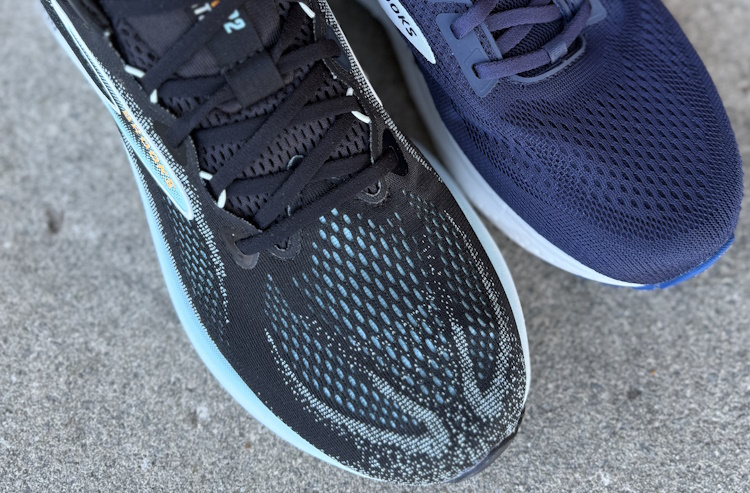
The Glycerin GTS 22 uses the latest version of Brooks’ nitrogen-injected foam, DNA Tuned. It’s Brooks’ most advanced cushioning to date in their training shoes. This nitrogen-infused foam offers a plush underfoot feel without becoming mushy. It provides a soft, luxurious ride while maintaining responsiveness and durability. By varying the sizes of the cells that make up the foam, the feel of the heel and forefoot can be tuned for specific purposes.
This DNA Tuned uses larger cells in the heel for a softer feel and maximum cushioning, and smaller cells in the forefoot for a more responsive toe-off.
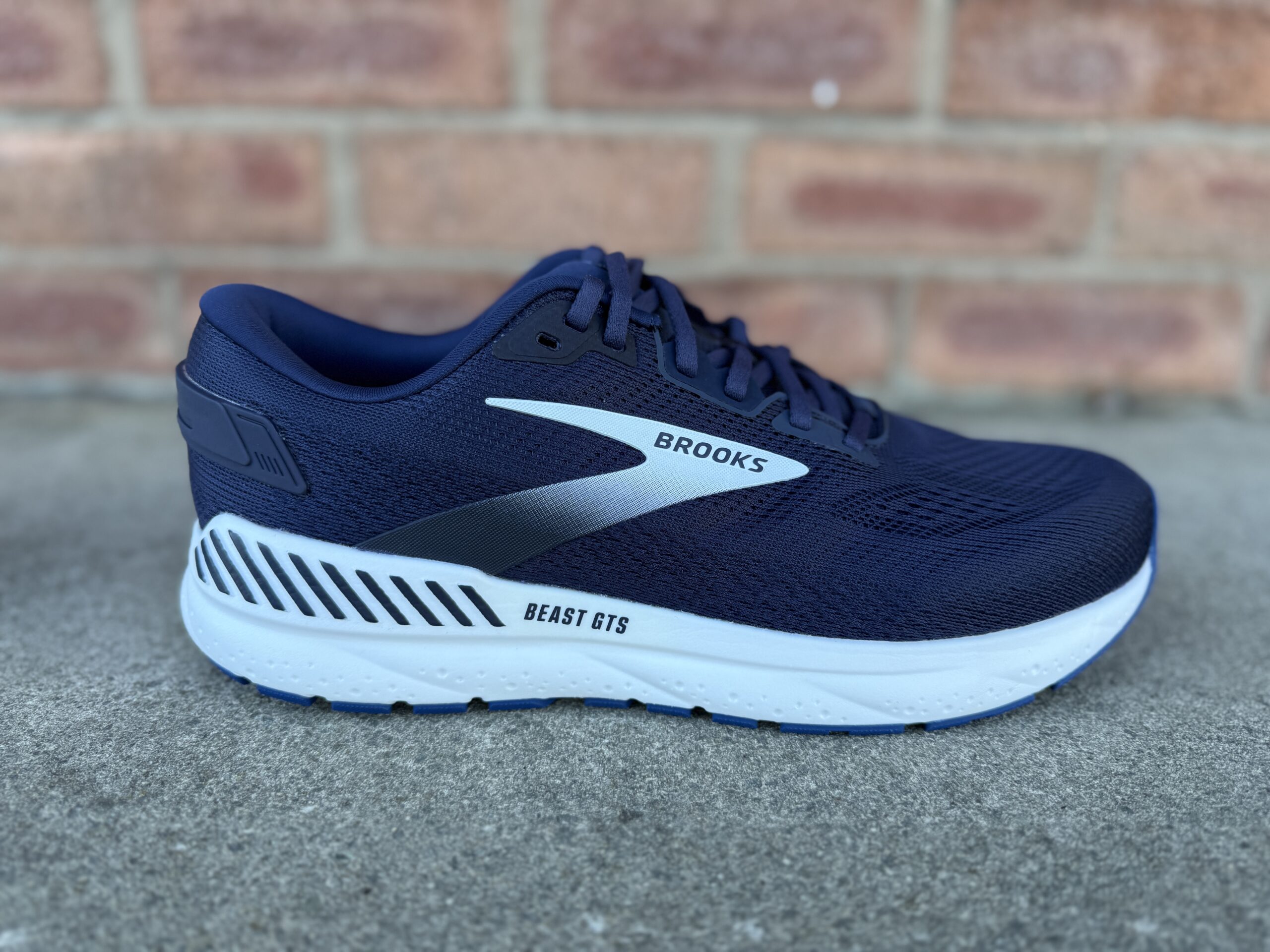
Beast GTS 24
Shop Now at

Glycerin GTS 22
Shop Now at
GuideRails
Both the Glycerin GTS 22 and Beast GTS 24 use the GuideRail Support System (Go-To-Support) to gently guide the foot into alignment and reduce excess movement, particularly for those who overpronate. It’s unobtrusive but effective, offering support only when needed.
These ‘rails’ are an extension of the shoe’s cushioning material, which extends up the side of both the lateral and medial edges of the rearfoot. By creating a cupped shape to the cushioning, the foot sits centrally, within the shoe and is held in place should it excessively pronate.
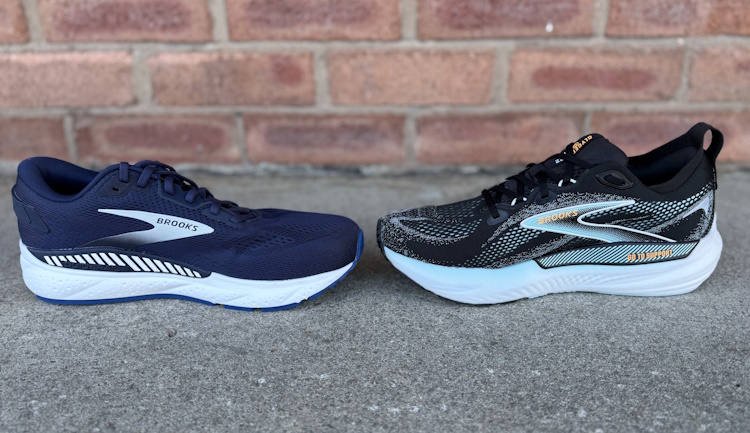
I’ve been a big fan of the GuideRail system from the brand since its introduction and always found it to be highly effective at controlling pronation.
Where the shoes differ is the midsole material, which makes up the GuideRail elements. In the Beast, it’s the DNA Loft V3, which is naturally a little firmer than the DNA Tuned material in the Glycerin.
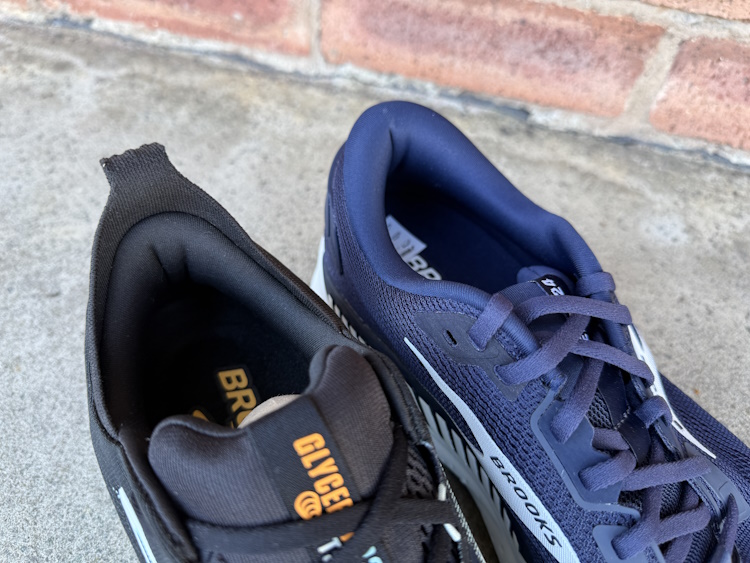
Support is overall a touch greater in the Beast GTS 24 too, thanks to a slightly straight medial edge to the midsole, which helps keep the foot in a more neutral position for a little longer in the gait cycle.
Fit
Both the Beast and Glycerin fit true to size in terms of length and width. The Beast is generally available in more width variation options where whereas the Glycerin comes in just regular and wide for both men and women.

The general fit of the Glycerin is very plush with a neat, engineered mesh upper with lots of plush padding in key areas of the foot to ensure comfort, the tongue, ankle collar and Achilles area. I think the Glycerin GTS 22 is one of the best-made and well-fitting uppers of any shoe on the market.
The Beast, too, has a well-made and comfortable upper and has a slightly higher volume to its overall construction. This helps if you are an orthotics user.
Performance
Neither of the shoes is designed for speed work or race-day efforts; these models are out-and-out daily trainers for those seeking control above all else.
This said, the Glycerin does have a generally more responsive feel it, thanks to the DNA Tuned midsole and the responsive nature of the forefoot.
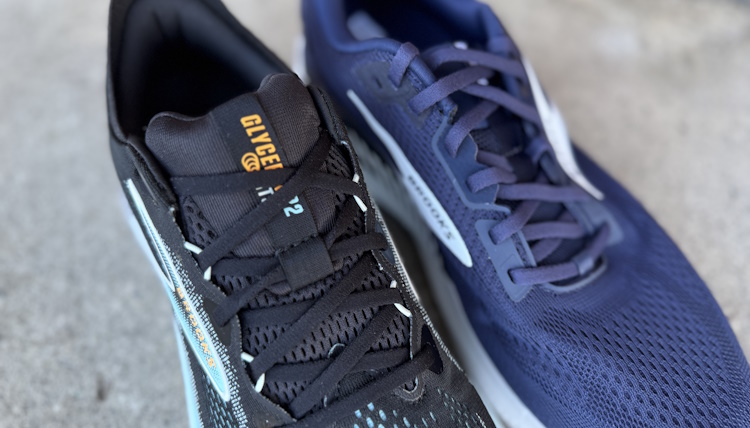
I am a regular wearer of the Glycerin GTS and find its feel very versatile. On my midweek easy runs, I find the shoe can cope with a wide range of paces and feels comfortable at any distance.
From my personal experience in recommending and fitting both shoes to many runners (and non-runners), the Beast GTS works particularly well for those heavier runners who demand a more durable and supportive model.

The Glycerin GTS 22 feels soft enough in the heel to absorb impact and provides a smooth roll through the gait cycle while keeping the foot in a neutral position. The toe-off is slightly energised and contributes to a very efficient overall running experience.
The Beast GTS 24 feels a little different in that the focus is more on control. The cushioning is good and handles the great impact of heavier runners well and keeps them straight and upright. The midsole works well, keeps its shape and proves very durable, all requirements of a shoe of this type.
My Verdict
Both these shoes offer an excellent combination of cushioning and control. While the Beast GTS 24 is perhaps better suited to the heavier runner or those who need a shoe that offers motion control rather than the more dynamic support of the Glycerin GTS 22.

The Beast GTS 24 is a little like its name suggests: a strong, powerful shoe that will control and support most feet that step into it.
The Glycerin GTS 22 offers a slightly more premium ride, and whilst it works very well in controlling over-pronation, it is a more natural-feeling shoe that works subtly.

I recommended the Beast GTS 24 for heavier runners, those who require the highest level of control for pronation and people who simply want a very supportive shoe for walking, day-to-day use and perhaps even work.
With the Glycerin GTS 22, I recommend it to a wide range of runners, such is its versatility. It has cushioning that is as good as any other training shoe on the market right now, that sits alongside effective support for both overpronation and, albeit to a lesser extent, supination. The Glycerin GTS is a very versatile, supportive running shoe.

Leave a Reply